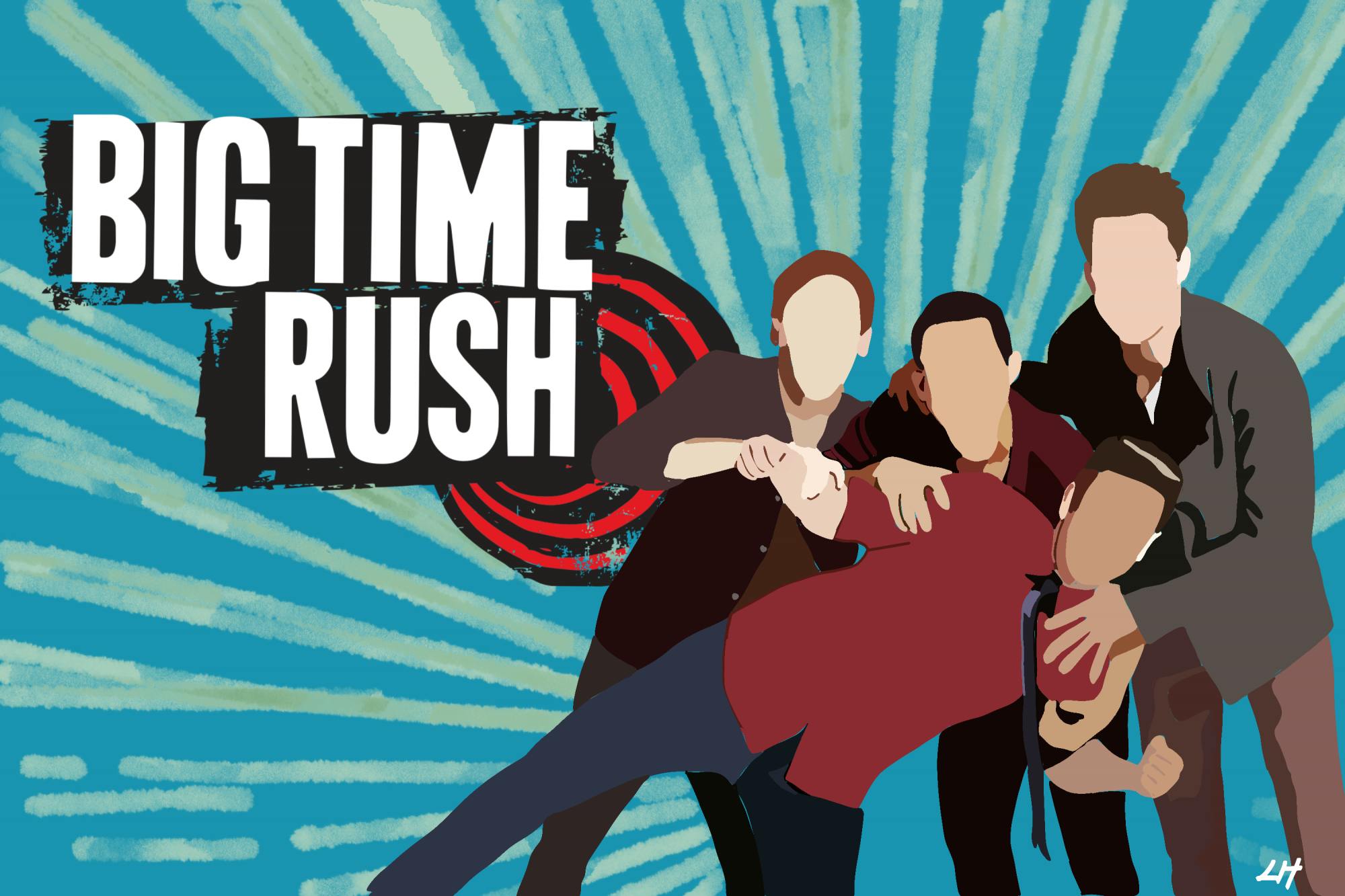Big Time Rush is back, riding the wave of nostalgia sweeping over Gen Z. The announcement and timing of Big Time Rush’s official comeback on Twitter in July 2021 couldn’t have been more perfect: In a pessimistic post-pandemic world, Gen Z has found optimism in many of their favorite childhood TV shows, owing largely to platforms like TikTok and YouTube to further spread their obsession.
Originally formed in 2009, Big Time Rush is an American pop music boy band composed of Kendall Schmidt, James Maslow, Logan Henderson and Carlos PenaVega. The members of Big Time Rush starred in a Nickelodeon musical comedy series of the same name, which chronicled the misadventures of four hockey players from Minnesota who move to Hollywood in hopes of making it “big time” as America’s next boy band sensation.
One of the most beloved shows of our generation is itself a product of nostalgia: Scott Fellows, the creator of the “Big Time Rush” Nickelodeon series, was partly inspired by a sitcom from the 1960s called “The Monkees.” Similar to “Big Time Rush,” “The Monkees” revolved around four male friends striving for superstardom as a rock and roll band. The made-for-TV group would eventually find huge success on the real world stage, topping the Billboard charts in 1987 and selling millions of albums throughout their careers. The success of “The Monkees” proved that the made-for-TV music model worked, and Disney Channel’s “Hannah Montana,” — which aired a year prior to the announcement of Big Time Rush — proved that the model could still generate revenue decades later.
While it’s sad to think that a lot of our favorite childhood shows were specifically geared toward a high-yield profit, these musical sitcoms constituted a golden era of childhood television. In hopes of creating their own cash cow, Nickelodeon adapted Disney’s wildly successful made-for-TV celebrity model, fusing shows and celebrities to capitalize on both TV and music. In 2007, Nickelodeon signed an agreement with Sony to collaborate on music and shows, birthing iconic shows like Big Time Rush and Victorious.
By marketing a Nickelodeon TV band for real-life audiences, Big Time Rush blurred the lines of reality so that the fictionalized personalities of Kendall, Logan, James and Carlos became conflated with their real personalities. As a result, Big Time Rush could be marketed as wholesome, Nickelodeon-approved teen heartthrobs. The television series built a narrative around Big Time Rush and their songs, creating an intimate connection between their fans and their music. The band is aware that they owe a large part of their success to the series — when asked in an interview with The Toronto Sun if the band Big Time Rush could have existed without the TV show, PenaVega admitted that “the show has definitely been our main audience. We have four million kids watching… On the radio, you’re not going to have four million people listening.”
Now, eight years after the announcement of their hiatus, Big Time Rush is back to revive the era of 2000s boy bands. In a YouTube trailer announcing the band’s December 2021 tour, a disembodied voice declares that “it’s 2021” and “the people of the world are ready for a comeback of epic proportions.” The voice dubs 2020 as the year that we should forget ever existed — a bit ironic considering that Big Time Rush owes the success of its comeback to the events that transpired during that year.
During quarantine, people were forced to seek comfort and escapism through different means. Netflix, Hulu and Disney+ experienced a huge surge in subscriptions and TikTok saw significant growth among users between the ages of 15 and 25. Streaming services and TikTok worked in synergy to birth a new trend where people would binge-watch familiar shows from the 2000s and take to TikTok or YouTube with commentary. Social media was flooded with short clips from old Disney and Nickelodeon shows, often accompanied by a caption or voiceover expressing disbelief that we had somehow managed to overlook their cheesy storylines and awkward acting as kids. These TikToks and YouTube videos produced a positive feedback loop in which people would encounter the commentary, rewatch the shows in question then react themselves. The result was the revival of an era of music and TV shows previously buried by the sands of time.
The new “NostalgiaTok” that gained traction during the pandemic was not all negativity — in fact, most of it was dedicated to reminiscing about childhood, a carefree, if not cringe, time in most people’s lives. When surrounded by the trauma of a pandemic, the nostalgia of our past became a solace. Today, videos with the nostalgia and childhood hashtags have received a collective 52.3 billion views on TikTok, in large part because of the fierce desire of Gen Z to turn back the hands of time, before COVID and adult responsibilities.
Though it’s become increasingly clear that most of our favorite childhood shows and music were created with the primary purpose of turning a profit, we can’t deny that they made our childhoods. Big Time Rush’s 44-date tour will undoubtedly attract thousands of sentimental 2000s babies seeking the ease of nostalgia, and the TikTok trends that made it all possible might serve to explain their headliner — famous Tiktoker Dixie D'Amelio. Big Time Rush’s reunion is representative of the modern desire for childhood that has been led by social media, creating an eager return to the comfort of nostalgia and youth.




